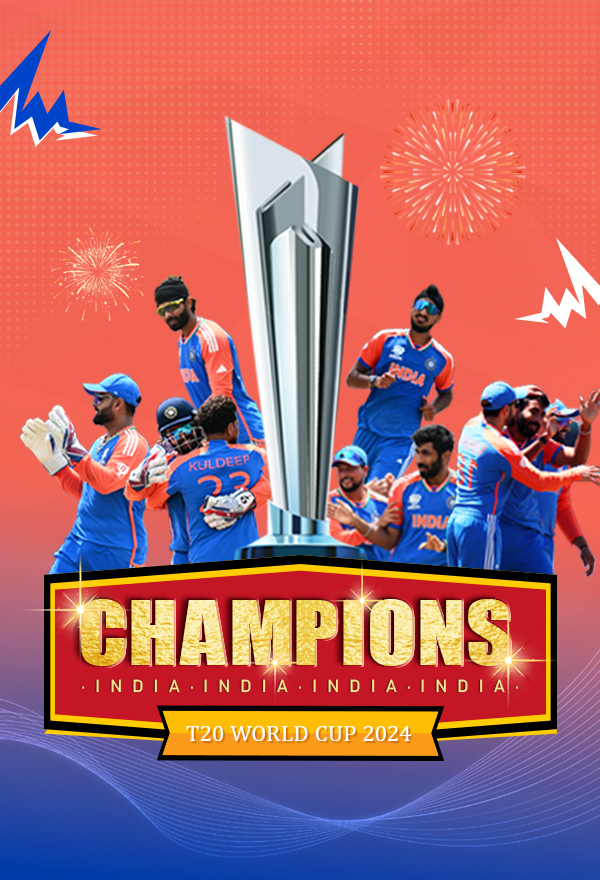
Samira Vishwas
Tezzbuzz|07-06-2025
August 16, 1980 in Kolkata and June 4, 2025 in Bengaluru. The two days were separated by nearly 45 years, but on both occasions, the passion and excitement of watching live sports or sporting heroes turned into unmitigated disaster, with young people losing their lives.
On August 16, 1980, the Kolkata football derby between arch rivals Mohun Bagan and East Bengal, which took place at the Eden Gardens (there was no Salt Lake Stadium then), witnessed a massive clash between the supporters of two teams, leading to 16 deaths.
On Wednesday (June 4), the victory celebrations of Royal Challengers Bengaluru’s maiden IPL triumph in 18 years were marred by the deaths of 11 fans, who were part of more than 100,000 people desperate to catch a glimpse of Virat Kohli more than anyone else.
It was Eden Gardens in 1980 and Garden City on Wednesday that witnessed tragedy. And both could have been avoided.
Also read: LIVE | 11 killed in Bengaluru stampede; crowd exceeded stadium capacity: Siddaramaiah
Eden Gardens, 1980
On that fateful August afternoon at the Eden, more than 70,000 spectators had thronged the galleries and Mohun Bagan’s speedy right winger Bidesh Basu was felled by East Bengal’s side back Dilip Palit, who was notorious for his rough tackling.
According to the reports of that time, the referee of that match, the late Sudhin Chatterjee, did not have control over the proceedings, and once Basu and Palit got into fisticuffs, the tension percolated into the stands.
Stones were pelted by spectators of both sides and the Kolkata Police were not alert enough to comprehend a stampede-like situation as the crowd became panicky and tried running helter-skelter.
Also read: Delhi stampede: Families hold photos, launch desperate search for missing loved ones
When City of Joy lost its joy
The black-and-white photos of fans hanging from the second-tier stands of Eden Gardens, desperately trying to avoid a stampede, still haunt those families.
Sixteen fans aged between 18 and 60, who had left their homes in the afternoon with unbridled joy and excitement, came back lifeless laid inside Matadors (no hearse vans those days).
They now call it a “Football Lovers’ Day” in Kolkata but law and order had gone for a toss that day, as there was no joy anywhere around the City of Joy.
Chaotic scenes outside Chinnaswamy Stadium in Bengaluru on Wednesday, when at least 11 people were killed and 33 suffered injuries in a stampede as a massive crowd gathered to witness the felicitation of the RCB team | PTI Photo
A tragedy averted
On December 9, 2012, a similar kind of tragedy could have happened as things got out of hand during a Kolkata Derby, with Mohun Bagan’s Rahim Nabi being hit on the forehead by a stone from the opposition team’s stand. But the sight was of East Bengal defender Arnab Mondal escorting the Mohun Bagan star to safety.
However, the match was abandoned and there was free-for-all on the Eastern Metropolitan Bypass, with as many as 40 people injured in clashes. Even policemen were injured in the scuffle with supporters of both sides.
Also read: Goa: Six killed, several injured in stampede at temple festival; CM orders probe
Close shaves in 1969
There were two other incidents back in 1969 — during Australia’s Test series in India in Kolkata (Eden Gardens) and Brabourne Stadium in Mumbai.
The incident in Mumbai happened after a debatable decision that saw the back of S Venkataraghavan. The spectators, who were listening to All India Radio commentary, were infuriated and wreaked havoc. There was fire in the stands but fortunately no deaths.
The stampede-like situation at Eden Gardens had more to do with the erstwhile corrupt officials of Cricket Association of Bengal, who had printed fake tickets above capacity and there were at least 20,000 people more than what the stands could hold.
The grapevine was that some of the CAB officials hid under their tables when police were trying to evacuate the spectators.
An avoidable tragedy
However, what happened on Wednesday can’t be described in mere words, as this was a planned gathering with less than 24 hours for the police and city administration to perform due diligence about the size of crowd expected to turn up.
There was no live match but star-struck youth wanting to get a glimpse of Virat Kohli led to this unmitigated and irreparable loss. Eleven lives lost and it could be more.
When these youngsters (including children) gathered at MG Road, Brigade Road, Cubbon Park or Vidhan Souda, it was all about passion and excitement to meet their heroes but the 11 set of parents will have to live with this tragedy that could have been avoided.
Also read: Kumbh stampede ‘not a big incident’, says BJP MP Hema Malini
Other major spectator deaths during sporting events
Hillsborough Disaster (1989): A stampede at the Hillsborough Stadium in Sheffield, England, resulted in 97 deaths and hundreds of injuries during an FA Cup semi-final between Liverpool and Nottingham Forest. It is still one of the worst of all crowd death incidents to sports.
Heysel Stadium Disaster (1985): A stadium wall collapsed at the Heysel Stadium in Brussels, leading to the deaths of 39 supporters during the European Cup final between Liverpool and Juventus.
Lima Stadium Riots (1964): In terms of death toll, this is the biggest sporting crowd tragedy in the last 60 years. It was an Olympic Qualifier between Argentina and Peru. There were riots leading to more than 300 people getting killed and nearly 1000 injured.
Luzhniki Stadium Crush (1982): It was a UEFA Cup match between Spartak Moscow and Haarlem FC and 66 fans died, mostly teenagers making it the biggest sporting tragedy in Russian history.
Houphouet-Boigny Stampede (2009): 19 fans died and 135 seriously injured in a stampede during a World Cup qualifier between Ivory Coast and Malawi in Abidjan.
(With agency inputs)

Shreyas Iyer and Rishabh Pant tell tales of investment risks: A wrap-up of IPL 2025

Team India departs for England for their opening series of WTC 2025-27 cycle

Sairaj’s all-round show helps Eagle Thane Strikers beat Bandra Blasters

Shashank Singh breaks down in tears after falling agonisingly short of pulling off miracle IPL title win for PBKS vs RCB







